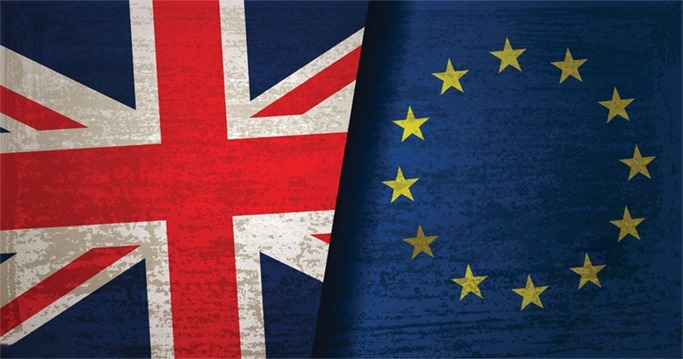- Economic Scenarios for Brexit
The United Kingdom has been seeking a change in its domestic policy for years. Numerous studies have been carried out on this since 2013. The Brexit project has been seriously studied, and by 2021, more than 5,000 studies in the form of books, articles, and conferences were indexed in reputable scientific databases, including Scopus.
Apparently, the upcoming Brexit, which will lead to a
The results show that the ATE of the Brexit process on real GDP growth is between -1.0 and -1.4 percentage points. Taking into account that the first estimate is likely affected by a country specific shock in Turkey, the ATE ranges approximately between -1.3 and -1.4 percentage points. Due to autoregressive dynamics, the LTE ranges between approximately -1.39 and -1.46 percentage points and is again highly significant.
The ATE on British GDP, in terms of 2016 British pounds, ranges between -4.0 and -4.5 billion but narrowly misses the ten percent significance level. The STE is -1.36 for both conducted estimates and again is highly significant. The calculated LTE in both estimates are quite dispersed, namely -39 and -117 billion British pounds. Although the report of an accurate level for the LTE is therefore difficult, both estimated figures are again highly significant. However, the figures for the cumulative loss of the Brexit process since the vote in both estimates are relatively close, namely 48 and 54 billion British pounds. The gap between the actual and counterfactual GDP ranges between 2.5 and 2.7%.
The PDA results for British exports illustrate the positive impact of the Brexit process. The ATE is 4.8 billion British pounds and significantly different from zero at the one percent level, whereas the cumulative treatment effect is approximately 58 billion British pounds. These results are contrary to the projection of Springford (2019), who estimates lower actual exports than predicted. Regarding the UK’s exports path and the British pound /US dollar exchange rate, the positive impact could be due to the depreciation of the British currency, which increased the competitiveness of the UK. Note that the positive impact on exports appears to be a short-term impulse.
- Post-Brexit Career and Support Programmes
The government is boosting jobs, investment and communities in the post-Brexit era by establishing eight freeports in England, and working to establish more in Scotland, Wales and Northern Ireland.
As part of a drive to net zero, it is backing industries of the future through the prime minister’s Ten Point Plan for a green industrial revolution, mobilising billions in private and public investment to turn the country into the world’s number one centre for green technology and finance, and creating 250,000 highly skilled green jobs across the UK.
Also, they are protecting, supporting and creating jobs across the UK through their Plan for Jobs, which will particularly help areas at risk of unemployment. They are backing innovation to create new jobs across the country with the £400 million “Strength in Places” Fund, which has made investments in Glasgow.
In the long run, the EFT’s expectation is that the economy will adjust, with workers moving out of manufacturing to find new jobs in the service sector. However, as Alasdair Smith, from the UK Trade Policy Observatory, notes: “The employees of the car assembly plants in Sunderland, Swindon and Burnaston can look at the communities affected by the decline of the coal, steel and textile industries in the 1980s and make their own judgments about the speed with which local economies recover from the loss of major employers.”
Of course, it should be borne in mind that these plans are included in the government’s proposal to leave the EU, and in many cases have not yet taken place.
- British Financial Aid Plan for Jobs
The 8-billion-pound Job Aid Plan was introduced by the UK government in 2020. Chancellor of the Exchequer, Rishi Sunak, said the government’s coronavirus jobs retention scheme was costing about 8 billion pounds ($9.8 billion) a month, but the final costs were hard to estimate because it depended on take-up.
“This is costing in the run rate of around 8 billion pounds per month at the moment but that will depend on the ultimate take-up,” Sunak told BBC television in an interview.
Earlier, he announced a four-month extension period for the plan – under which the government will pay 80% of the wages of workers who are temporarily laid off – until the end of October, but said employers would have to contribute from August.
This plan allayed many concerns about job losses in the UK, but the unpredictability of the pandemic and the UK exit from the EU added to financial woes. The battered hospitality sector said it was not enough to save restaurant and pub jobs and the Chancellor himself admitted that “we can’t save every job”.
Also, the six-month Jobs Support Scheme guarantees that employees will keep around £8 in every £10 of their regular earnings – and more than 90% in most cases. It is designed to apply only to “viable” jobs where employers are willing to bear more of the costs.
Conclusion
The pandemic failed to prevent Britain from leaving the EU, although it was a severe blow to the country as many businesses shut down and jobs were lost, plunging Britain into economic depression; but Britain stood firm and withdrew from the European Union. Now, after a few months, post-Brexit programmes are finally being implemented.
The UK intended to use Brexit to create new jobs, but the coronavirus caused serious problems, even for existing jobs. Therefore, it was decided to help compensate these jobs and extend aid once every four months. But this was met with protests, because the aid was not paid in full or was insignificant for some businesses. It is also clear that the UK economic growth index has been very slow since last year, which is a serious obstacle to Brexit plans

